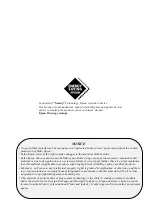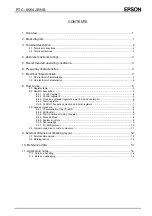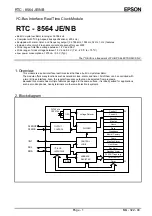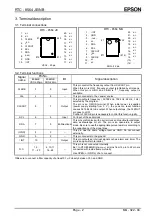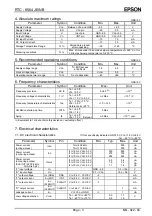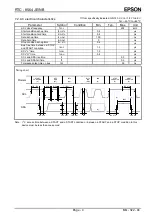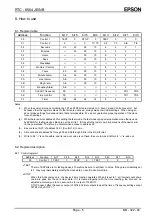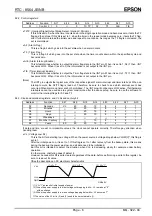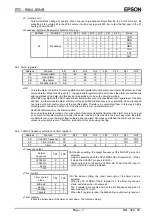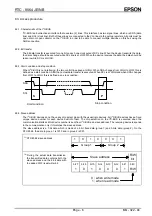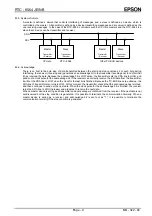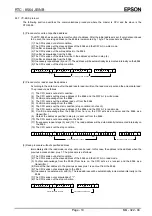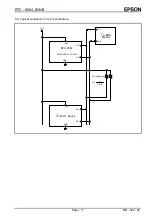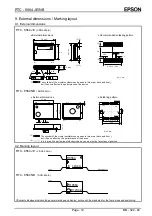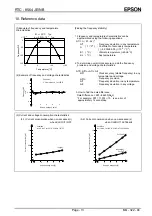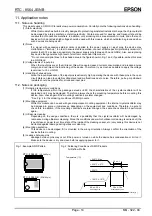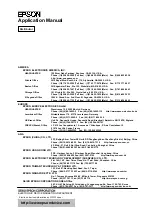
RTC - 8564 JE/NB
Page - 13
MQ - 322 - 04
10. Reference data
[Finding the frequency stability]
1. Frequency and temperature characteristics can be
approximated using the following equations.
∆
f
T
=
α
(
θ
T
-
θ
X
)
2
∆
f
T
: Frequency deviation in any temperature
α
( 1 / °C
2
)
: Coefficient of secondary temperature
( (
−
0.035
±
0.005 )
×
10
-6
/ °C
2
)
θ
T
(
°
C )
: Ultimate temperature (+25
±
5 °C)
θ
X
(
°
C )
: Any temperature
2. To determine overall clock accuracy, add the frequency
precision and voltage characteristics.
∆
f/f
=
∆
f/fo +
∆
f
T
+
∆
f
V
∆
f/f
: Clock accuracy (stable frequency) in any
temperature and voltage.
∆
f/fo
: Frequency precision
∆
f
T
: Frequency deviation in any temperature.
∆
f
V
: Frequency deviation in any voltage.
3. How to find the date difference
Date Difference =
∆
f/f
×
86400(Sec)
* For example:
∆
f/f = 11.574
×
10
-6
is an error of
approximately 1 second/day.
(1)Example of frequency and temperature
characteristics
-150
-100
-50
0
-50
0
+50
+100
Temperature [
°
C]
F
re
que
nc
y
∆
f
T
×
10
-6
θ
T
= +25
°
C Typ.
α
= -0.035
×
10
-6
Typ.
(2) Example of frequency and voltage characteristics
- 3
2
Fr
e
que
nc
y
∆
f
v
×
10
-6
+ 3
±
0
3
4
5
Condition :
3 V as reference, Ta=+25
°
C
Supply Voltage V
DD
[V]
(3) Current and voltage consumption characteristics
(3-1) Current consumption when non-accessed (i)
when CLKOUT=OFF
I
DD
[
µ
A]
2
C
u
rr
e
n
t c
o
n
s
um
pt
io
n
[
µ
A]
Supply Voltage V
DD
[V]
1.0
0.5
3
4
5
Condition :
f
SCL
=0 Hz, Ta=+25
°
C, CLKOUT=OFF
(3-2) Current consumption when non-accessed (ii)
when CLKOUT=32.768kHz
CL=30 pF
2
10
5
3
4
5
Condition :
f
SCL
=0 Hz, Ta=+25
°
C, CLKOUT=32.768 kHz
I
DD
32K[
µ
A]
CL=0 pF
C
u
rr
e
n
t c
o
n
s
um
pt
io
n
[
µ
A]
Supply Voltage V
DD
[V]

